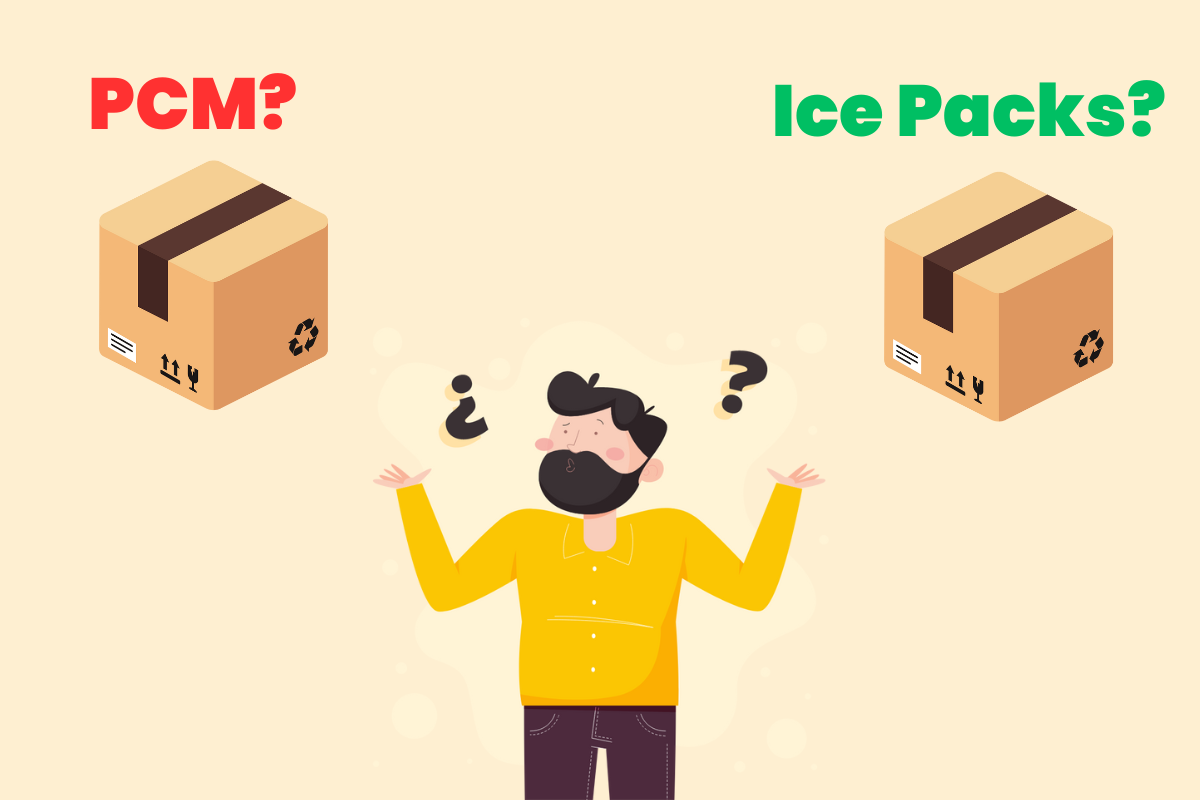PCM vs. Gel Packs: Which is Better for Your Cold Shipments?
Key Benefits of Phase Change Materials (PCMs) for Cold Shipments: Findings from Ice Popsicle Experiment?

In our conducted experiment, led by Skippi, our objective was to investigate the benefits associated with the utilization of phase change materials (PCMs) in lieu of conventional ice packs for cold shipments.
To examine this, we devised a scenario involving the transportation of a package of Ice Popsicles during the peak of summer. The results of our experiment unveiled three notable advantages that ensure the maintenance of product integrity throughout the transportation process.
Table of Contents:
- Wider Range of Temperatures: Explore how phase change materials (PCMs) offer a broader temperature range for cold shipments.
- Maintains Temperature Longer: Discover how PCMs excel in maintaining desired temperatures for extended periods during transportation.
- Provides More Value: Uncover the added value that PCMs bring to cold shipments compared to traditional ice packs.
- Conclusion: Summarize the key findings and benefits of using PCMs over ice for cold shipments.
Wider Range of Temperatures
Phase change materials (PCMs) offer a distinct advantage over traditional ice packs due to their customizable melting temperatures. While ice packs are effective for keeping things cold, they may not be suitable for products that cannot tolerate freezing temperatures or fall outside the freezing range of water. PCMs are specifically designed to address these challenges. When it comes to cold or cool shipments, PCMs provide tailored temperature options ranging from -30°C to 18°C.
In our particular study, we focused on the protection of temperature-sensitive beverages, specifically ice popsicles, during shipment. Popsicles require freezing temperatures to maintain their quality, and exposure to higher temperatures can lead to appearance changes and loss of integrity. To ensure the preservation of popsicles during transit, we established -10°C as the maximum acceptable temperature threshold. In order to determine the most effective solution for maintaining the desired temperature range, we compared the performance of a phase change material with a melting point of 18°C alongside traditional ice.
Maintains Temperature Longer
Due to its melting point at 0°C, ice has limitations in maintaining temperature as effectively as other phase change materials, especially when the critical temperature range exceeds 0°C. Our study clearly demonstrates this phenomenon.
For our popsicles shipment, meticulous attention was given to ensure uniform packaging. As depicted below, both shipments were prepared using identical shippers, packing materials, and ice pops. The only distinction between the two boxes was the choice of temperature management solution – one contained 318g of ice, while the other utilized 316g of phase change material with a melting point of 18°C. These shipments were then packed and transported together via EV-Vehicles from Hyderabad, Banjra Hill to Hyderabad City, Hyderabad.
We also took care to ensure consistent shipping routes and conditions. The packages were sent in parallel, exposing them to the same ambient temperatures during transit. As illustrated in the graph below, the ice-containing shipper performed adequately for approximately 20 hours, likely indicating the complete melting of the ice pouch. Subsequently, the popsicles surpassed the required temperature threshold of -10°C. In contrast, the shipper employing the phase change material maintained the popsicles below -10°C for the entire duration of the shipment, which exceeded 24 hours.

Deliver Cold Shipment Anywhere, Anytime with Machphy Shipper Box
Our Shipper Box ensures fresh frozen treats with 24+ hours of backup in extreme cold (-20°C) for worry-free deliveries and satisfied customers.
Provides More Value
Frequently, we encounter the question, “These benefits sound promising, but what will be the additional cost?” Although ice packs may have a lower initial investment compared to PCMs, our research demonstrates that they do not provide the same level or duration of product protection, resulting in increased expenses related to shipping materials, compromised product quality, and potential damage to brand integrity.
“As previously mentioned, our studies indicate that ice packs ceased safeguarding the payload after approximately 24 hours into the shipment, whereas the PCM solution lasted approximately 48 hours.”
“Therefore, if you rely on ice packs, the only way to ensure your shipment remains within the desired temperature range is to limit the shipping distance. On average, overnight shipments can result in nearly 300% higher shipping fees to achieve the same objective. These additional costs accumulate with each shipment, surpassing the initial investment in PCM by a significant margin. Furthermore, PCMs are recyclable and can be reused multiple times within your supply chain.”
Conclusion:
While ice packs may be suitable for various logistical scenarios, it is crucial to thoroughly consider all factors and costs associated with transportation routes before finalizing a solution. Once all aspects of the project are carefully evaluated, it becomes evident that PCMs often present a superior choice, offering a more versatile, safer, and valuable alternative that enhances your brand.
Interested in obtaining more information? As a leading provider of cold logistics solutions, Machphy offers a diverse range of cold logistics services. With our Biosure Bags and Shipper Box products, we understand the importance of keeping logistics aligned with the evolving needs of safe and affordable delivery. This commitment drives us to continually provide innovative technologies, prioritize customer satisfaction, and ensure brand protection.
The Innovation Mix
Keep up to date with our latest news and analysis by subscribing to our regular newsletter
By clicking the “Subscribe” button, I agree and accept the privacy policy of Machphy Solutions.

